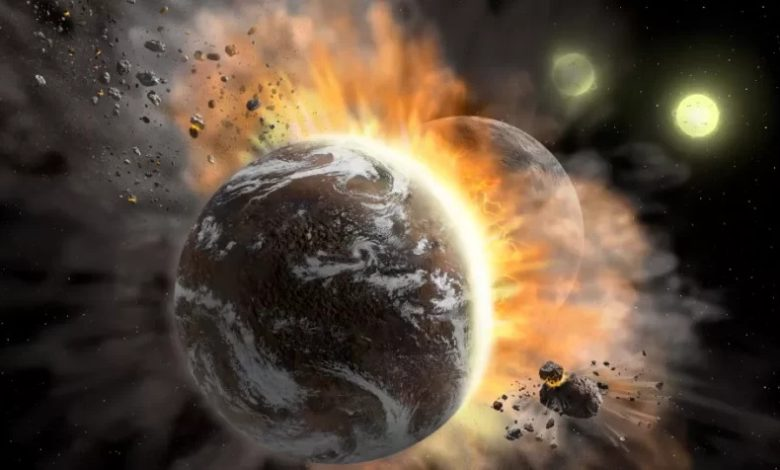Discovering the ability of satellites to erase alien life in the universe

The Moon falling to Earth might seem like an unrealistic apocalypse scenario, but for some planets in other star systems such catastrophic collisions could be common.
In new research published in the journal Monthly Notices of the Royal Astronomical Society, I used computer simulations to show that collisions between exoplanets and their moons might in fact be a regular occurrence, which would be disastrous for any alien life emerging on those planets.
While astronomers have not reliably detected exomoons, they expect them to be abundant in the universe.
“We know of a lot of moons in our solar system, so naturally we would expect to see moons in exoplanet systems,” says Jonathan Brand, an astrophysicist at the University of Kansas who was not involved in the new study. Therefore, theorists such as Brad Hansen, an astronomer at the University of California, Los Angeles and author of the new study, are interested in exploring how moons and exoplanets interact, and how these interactions affect the possibility of life in distant star systems.
Gravity governs the interactions between the planet and its moons, manifesting itself in the form of tides and other effects, such as the tidal deceleration of our Moon.
Each year, Earth's moon creeps a little more than an inch away from our planet, and its orbit increases each year.
Meanwhile, the Earth rotates a little slower each year. These two effects are directly related, so that the Earth gives some angular momentum from its rotation to the orbit of the Moon.

And if this trade-off continues long enough, the Moon may eventually become unbound with Earth. Fortunately for us, this process will take a long time for the sun to explode long before the moon can completely escape. But around some exoplanets, especially those much closer to their stars than Earth is to the Sun, this situation could develop much faster, as the planets and their "unstable" moons collide within the first billion years of their formation, according to Hansen's calculations. (For comparison, the Earth and Moon are about 4.5 billion years old.)
In Hansen's simulations, moons that were moving away from their host planets often returned with a bang, crashing into the planet and creating huge clouds of dust. These dust clouds glowed in infrared, lit and warmed by starlight. But it only lasted about 10,000 years before fading away, which is a "blink of an eye" in cosmic calculations.
Hansen said observations from NASA's Wide Field Infrared Space Telescope indicate that every star will undergo such an event at some point in its life.
Because these clouds of dust are short-lived, astronomers have observed only about a dozen of them.
In addition, some astronomers remain unconvinced that these dust clouds are from exomoons, and instead suggest that they may result from a collision between two planets.
Either way, more observations are needed to understand the role of exomoons in exoplanet evolution and to determine whether these collisions might affect alien life.
“The moons are often considered useful,” Hansen explained. It is believed that they help stabilize the tilt of the planet's axis, making the seasons nicer and more suitable for life.” However, a collision like the one in Hansen's simulation would certainly outweigh this benefit by destroying any chance of life in a fiery explosion.
Source : websites

